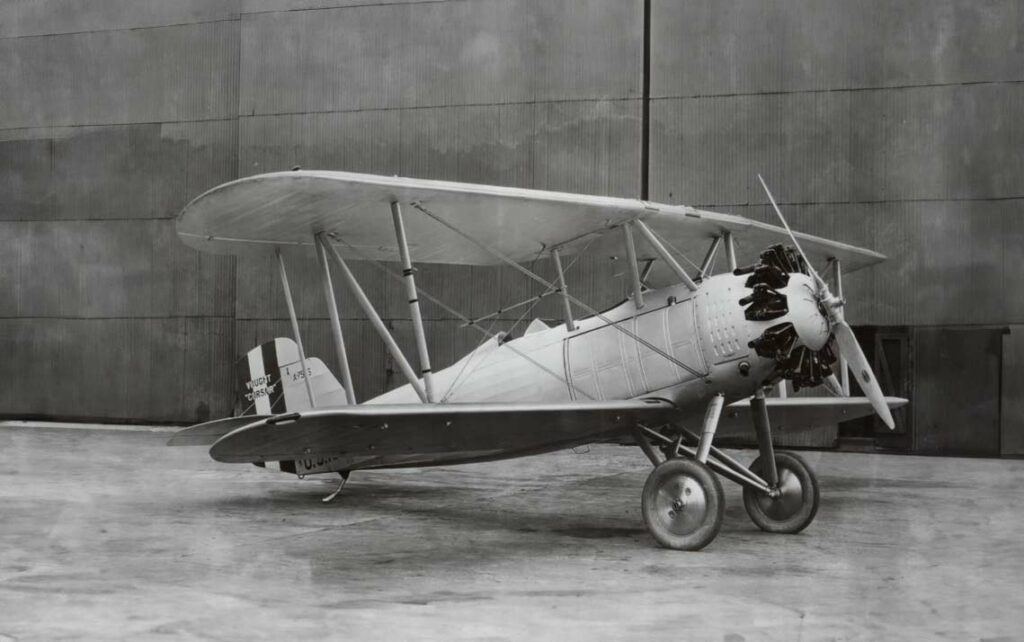The Vought O2U Corsair, an American 1920s biplane, was a versatile reconnaissance and bomber aircraft, known for its Pratt & Whitney R-1690 engine. This article provides an in-depth analysis of the Vought O2U Corsair, exploring its development, design, performance, and military application. It examines the aircraft’s role in advancing reconnaissance and bombing capabilities during the interwar period.
The Vought O2U Corsair played a significant role in the evolution of naval aviation during the interwar period. As a reconnaissance and light bomber aircraft, it marked a key point in the development of carrier-based aviation. This article delves into the Corsair’s development, its design characteristics, performance metrics, and its operational history.
History of the Development of the Vought O2U Corsair:
In the 1920s, the rapidly evolving field of aviation saw a demand for more versatile and capable aircraft, particularly in naval operations. The Vought O2U Corsair was developed in this context, as navies sought aircraft that could perform reconnaissance, observation, and light bombing missions.
The development of the O2U Corsair was initiated by the Vought Corporation, a prominent American aircraft manufacturer. Under the leadership of chief designer Rex Beisel, the project aimed to create a multi-role aircraft that could meet the diverse needs of naval aviation. The Corsair’s first flight occurred in 1926, introducing a new era in naval aircraft design.
The development of the Corsair was influenced by the emerging requirements of carrier-based operations and the need for improved aircraft performance. It represented a response to the United States Navy’s call for a modern, efficient, and robust aircraft capable of operating from both land and carrier decks.
Design of the Vought O2U Corsair:
The design of the Vought O2U Corsair was marked by its balance of robustness, versatility, and performance. It was a biplane with a wingspan of 36 feet (10.97 meters) and a length of 27 feet 6 inches (8.38 meters). The Corsair’s airframe featured a mixed construction, with a fabric-covered fuselage and metal wings.
Powered by the Pratt & Whitney R-1690 radial engine, capable of delivering around 450 horsepower (336 kW), the Corsair was designed for both efficiency and power.
The aircraft’s design included innovations such as a foldable wing mechanism for easier storage on aircraft carriers and an arrestor hook for carrier landings. However, as a biplane, its speed and maneuverability were limited compared to the monoplane designs that emerged later.
Despite these limitations, the Corsair set a standard for future naval aircraft, particularly in terms of carrier operability and multi-role capabilities.

Performance of the Vought O2U Corsair:
The performance of the Vought O2U Corsair was a key factor in its widespread adoption. The aircraft could reach a top speed of approximately 150 mph (241 km/h), with a service ceiling of around 19,700 feet (6,000 meters) and a range of about 680 miles (1,094 km).
Compared to contemporaries like the Curtiss Falcon and the British Fairey IIIF, the Corsair was competitive in terms of range and versatility. While it did not excel in speed, its adaptability for various roles, including reconnaissance and light bombing, made it a valuable asset.
Military Use and Combat of the Vought O2U Corsair:
The Vought O2U Corsair saw extensive service with the United States Navy and Marine Corps. Its armament typically included a combination of machine guns and the capability to carry bombs, making it suitable for a variety of military operations.
The Corsair was used in numerous conflicts throughout the late 1920s and 1930s, including interventions in Central and South America. Its adaptability for both reconnaissance and combat roles was highly valued.
The aircraft was also exported to several countries, enhancing its role in global naval aviation. It was eventually replaced by more advanced monoplane designs, such as the Vought SB2U Vindicator, as aviation technology progressed.
The Vought O2U Corsair represented a significant milestone in the development of naval aviation. Its versatility, robust design, and operational flexibility set a precedent for multi-role carrier-based aircraft. While surpassed by later designs, the Corsair’s legacy lies in its contribution to the evolution of naval reconnaissance and bombing capabilities, marking it as an important aircraft in military aviation history.
Back to the Spy Planes section.